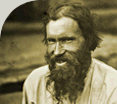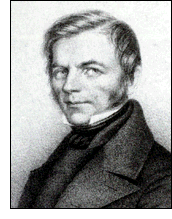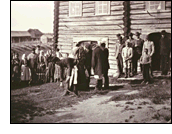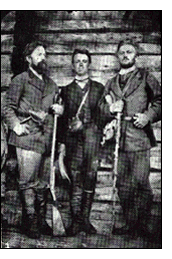 |
| Introduction |
| Poetry collecting |
| Lönnrot in Viena |
| Karelianism |
| Viena in the 1900's |
| Rune singers and collectors |
| Main page | Background | Villages | Revitalisation | Cultural tourism | Map | |
|
|
Another person who took an early interest in Viena was the vicar of Utsjoki, Jacob Fellman, who collected poems on an 1829 field trip that took him through Vuokkiniemi, Jyvöälahti, Uhtua and Jyskyjärvi to Kemi. Fellman's account of this journey and the poetry he collected on it were not published until 1906; therefore, Lönnrot never had any knowledge of his work. When he began collecting poetry in Viena, Elias Lönnrot already knew the reputation of the district as a song-lands very well. In fact, it was his ambition on his very first field trip, in 1828, to visit Viena, but he did not have enough time to do so. His second field trip (1831) was also frustrated as he neared the same destination, when he was ordered to return to Helsinki to attend to the cholera epidemic that had broken out there. It was not until his third field trip (1832) that he actually reached Viena. Even then he was able to spend only a week there, and did not even make it as far as Vuokkiniemi. Lönnrot's fourth field trip (1833), his first opportunity to collect poetry in the bardic villages of Vuokkiniemi, has a singular cultural-historical significance. It was on this trip that he got the idea of creating an epic. His fifth trip (1834) was to provide substantial content for the emerging epic, for it was on that journey, while in Latvajärvi, that Lönnrot met Viena's most accomplished bard, Arhippa Perttunen. After completing the first edition of the Kalevala (1835), Lönnrot made only two more field trips to collect poetry in Viena: his sixth trip, in the spring of 1835, and his seventh, which took place in two phases in the years 1836 and 1837. These by no means marked the end of poetry-collecting in this area, however. The publication of the Kalevala provided new impetus to collect poetry in Viena. The epic was regarded as having given the Finnish people an "antiquity," every possible facet of which was to be recorded.
After publication of the Kalevala, additional poetry was
collected in Viena by J.F. Cajan, M.A. Castrén
and D.E.D. Europaeus. The next wave of poetry collection in Viena took place in the 1870s. By that time, the Kalevala had firmly instilled a sense of national identity in the Finnish educated classes. Three collectors - Arvid Genetz, Aksel Berner and A.A. Borenius - can be credited with extremely thorough work, including field trips to villages which collectors had not previously visited. Other poetry collectors working in the area in the 1870s included A.W. Ervasti and Hj. Basilier. In the following decade, the cavalcade of poetry collectors to visit Viena was joined by Matti Varonen, Heikki Meriläinen and J.W. Juvelius. |
 The
first person to collect poetry in Viena was A.J. Sjögren,
who visited the villages in the area in 1825. The poems he collected
did not influence the creation of the Kalevala, but they did contribute
to the second edition. Lönnrot did not have access to Sjögren's
work until the late 1840s. Sjögren visited the villages of
Vuokkiniemi, Vuonninen, Pirttilahti, Jyvöälahti, Uhtua,
Jyskyjärvi and Paanajärvi. In Vuonninen he had an opportunity
to record the songs of the bard Ontrei Malinen.
The
first person to collect poetry in Viena was A.J. Sjögren,
who visited the villages in the area in 1825. The poems he collected
did not influence the creation of the Kalevala, but they did contribute
to the second edition. Lönnrot did not have access to Sjögren's
work until the late 1840s. Sjögren visited the villages of
Vuokkiniemi, Vuonninen, Pirttilahti, Jyvöälahti, Uhtua,
Jyskyjärvi and Paanajärvi. In Vuonninen he had an opportunity
to record the songs of the bard Ontrei Malinen. The
first edition of the Kalevala already gives the reader Lönnrot's
personal view of the world and events which the poetry in his collections
related. In preparing the second edition of the epic, he concentrated
more on correcting logical inconsistencies, expanding the descriptions
of events, and refining the overall aesthetic impression of the
work. He no longer needed to seek out experiences and insights on
which to build the epic beyond the material he already had to work
with. It sufficed for his purposes that others went out and collected
variants of poems which he could then compare with those he had
already recorded.
The
first edition of the Kalevala already gives the reader Lönnrot's
personal view of the world and events which the poetry in his collections
related. In preparing the second edition of the epic, he concentrated
more on correcting logical inconsistencies, expanding the descriptions
of events, and refining the overall aesthetic impression of the
work. He no longer needed to seek out experiences and insights on
which to build the epic beyond the material he already had to work
with. It sufficed for his purposes that others went out and collected
variants of poems which he could then compare with those he had
already recorded.